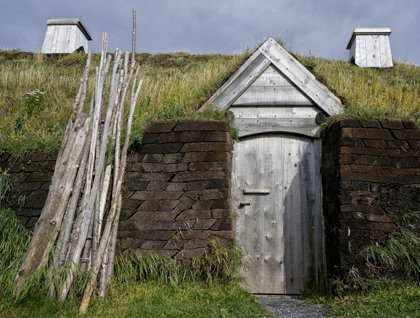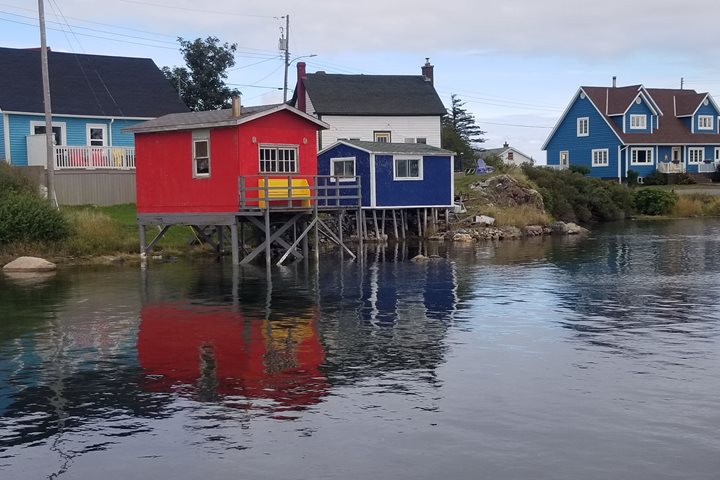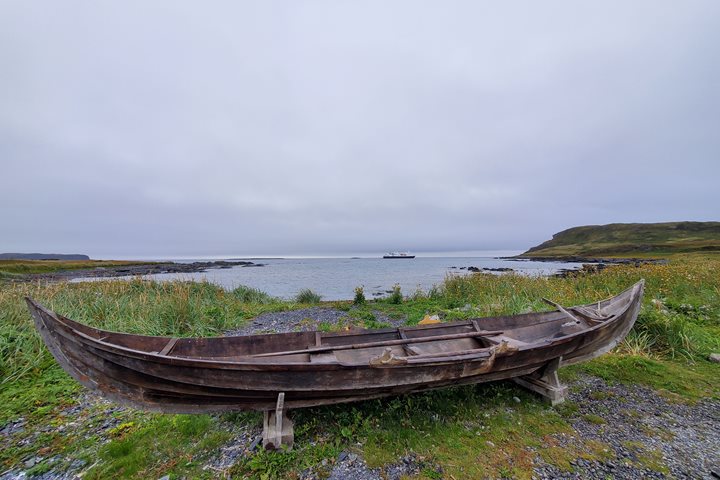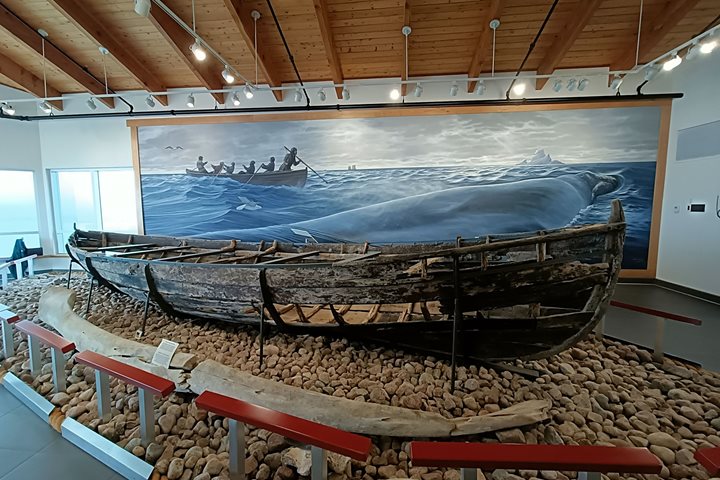This morning the National Geographic Explorer arrived in the sheltered harbor at St. Anthony on the remote northern coast of Newfoundland. Once ashore sight-seeing tours of historically interesting buildings and features, and hikes up to and along the forested ridge behind the town, were organised. This is a great time to be exploring this region. Autumn’s hues are beginning to show and hikers were treated to a colourful tapestry of plants, shrubs and trees including eyebright, spruce, wood fern and matchstick lichen. The personage most famously associated with the town is Dr. Wilfred Grenfell, who devoted his life to Christian charity and established a network of hospitals, schools and cooperatives in the remote coastal settlements of Newfoundland and Labrador. We visited the Grenfell Interpretation Centre and House Museum, both of which highlight this remarkable humanitarian-driven individual. His erstwhile home contains hundreds of keepsakes and other items that he collected as he travelled to remote corners of the region. Placed on one of the walls is a framed certificate from 1930 of his lifetime membership of National Geographic.
The afternoon was spent exploring one of the most important archaeological sites in the world, namely L’Anse aux Meadows, situated at the northernmost tip of the Newfoundland Peninsula. The famous medieval Icelandic sagas tell of Leif Erikson setting out from the Eastern Settlement to explore lands that had been sited to the west of Greenland. The lands that he explored to the south were named Vinland, or “Wine Land,” on account of the profusion of wild vines that grew there. For decades this fabled region discovered by Leif and his fellow band of Viking seafarers eluded archaeologists. However, in 1961, following exhaustive searching, the Norwegian explorer Helge Ingstad and his archaeologist wife Anne Stein Ingrad discovered the remains of a Viking settlement on a low terrace here. Consisting of three longhouses and smaller associated structures, this site is definitive evidence for Norse presence in North America around the year 1,000 AD.
Used primarily as a base for stockpiling valuable materials including timber and animal furs, which were then shipped to Greenland and farther afield, the site was occupied for a relatively short period. The remains of a small on-site furnace and forge are the earliest evidence for the working of iron in North America. A fine museum, which exhibits numerous finds from the site, provided much information. Well before the Vikings set up camp here, indigenous groups of nomadic hunter-gatherers utilised the resources of the area, and evidence for their cultures extend back to around 3,000 BC.
Park Canada guides were on site to highlight the background and layout of the remains and a reconstructed Viking longhouse was occupied by two “Vikings” who, dressed in traditional garb and with a storyteller’s skill, regaled us with anecdotes and insights of their life and culture. Close-by is Norstead, a living history site consisting of a reconstructed Viking village and trade port. Ambling around the various buildings gave us a sense of the pioneering spirit that was a trademark of these seafaring people. Safely back on the National Geographic Explorer we hauled anchor and departed from this remarkable place, our bow slicing through the waters once criss-crossed by stout-hearted Viking explorers.







